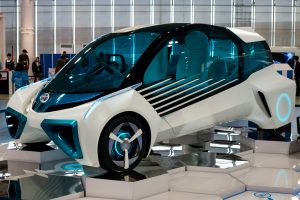Hydrogen Refueling: Infrastructure and Planning
Welcome to the world of hydrogen refueling! As we delve deeper into the consequences of climate change, the shift towards more sustainable and environmentally friendly energy sources has become crucial. One such source that has gained traction in recent years is hydrogen. As a clean, efficient, and abundant energy carrier, hydrogen has the potential to revolutionize the transportation sector. However, its adoption is hindered by the lack of infrastructure and proper planning. In this article, we will explore the current state of hydrogen refueling infrastructure and the necessary planning strategies for its successful implementation.
The Need for Hydrogen Refueling Infrastructure
With the rise of electric vehicles, it’s easy to overlook the potential of hydrogen as a fuel source. However, hydrogen-powered vehicles have significant advantages over electric vehicles. They have a longer range, faster refueling time, and produce only water vapor as emissions. Additionally, hydrogen can be produced from renewable sources, making it a truly zero-emission fuel. But to realize its full potential, the development of a robust hydrogen refueling infrastructure is imperative.
The Current State of Hydrogen Refueling Infrastructure
Currently, there are around 500 hydrogen refueling stations (HRS) worldwide, the majority of which are located in Japan, California, and Europe. However, compared to the 168,000 gas stations in the US alone, the number of HRS is minuscule. This lack of infrastructure can be attributed to the high cost of building and maintaining HRS, as well as the low demand for hydrogen-powered vehicles. As a result, hydrogen refueling is currently only feasible in certain regions with government subsidies and strong policies, making its widespread adoption challenging.
The Challenges of Building Hydrogen Refueling Infrastructure
The main challenges in building a hydrogen refueling infrastructure include the high costs, safety concerns, and complex regulations. The production, transportation, and storage of hydrogen require specialized equipment and infrastructure, similar to those needed for gasoline. Furthermore, strict regulations must be followed to ensure the safety of the public and the environment. As a result, the initial capital investment for building a hydrogen refueling station is significantly higher compared to a traditional gas station.
The Importance of Planning for Hydrogen Refueling Infrastructure
Proper planning is crucial for the successful implementation of hydrogen refueling infrastructure. It involves identifying the most suitable locations for HRS, considering factors such as population density, hydrogen demand, and the availability of renewable energy sources. Additionally, collaboration between different stakeholders such as policymakers, energy providers, and vehicle manufacturers is essential to overcome the challenges of building a hydrogen refueling network.
The Role of Policies and Incentives
Policies and incentives play a significant role in promoting the development of hydrogen refueling infrastructure. Governments around the world are providing subsidies and tax incentives to encourage the production and use of hydrogen. For instance, the California Energy Commission has allocated $20 million annually for the construction of up to 100 new HRS, while Germany offers rebates and tax exemptions for hydrogen-powered vehicles. These policies not only help offset the high costs of building HRS but also send a signal to investors about the potential demand for hydrogen fuel.
The Future of Hydrogen Refueling Infrastructure
Despite the challenges, the future of hydrogen refueling infrastructure looks promising. In recent years, there has been a significant increase in the number of hydrogen projects and partnerships between governments, energy companies, and automakers. The European Union’s Hydrogen Strategy aims to have 6,000 hydrogen refueling stations and 1 million hydrogen-powered vehicles by 2025, while Japan plans to have 900 HRS and 800,000 fuel cell vehicles by 2030. These initiatives, along with the advancements in hydrogen production and storage, indicate a bright future for hydrogen refueling infrastructure.
Conclusion
Hydrogen has the potential to play a significant role in the transition towards a more sustainable future. However, its successful implementation depends on the development of a robust hydrogen refueling infrastructure, which comes with its own set of challenges. With proper planning, policies, and collaboration between different stakeholders, we can overcome these challenges and pave the way for a clean, efficient, and abundant hydrogen economy.










